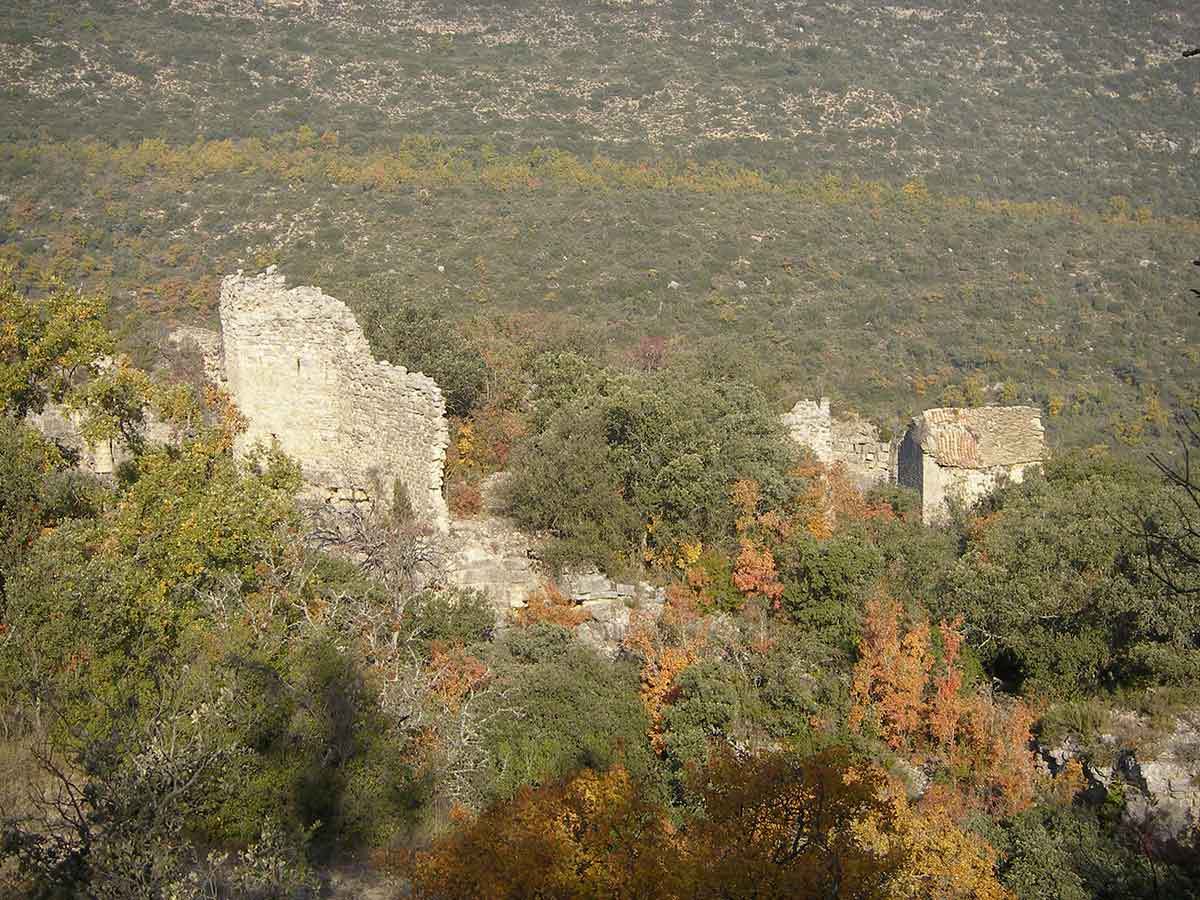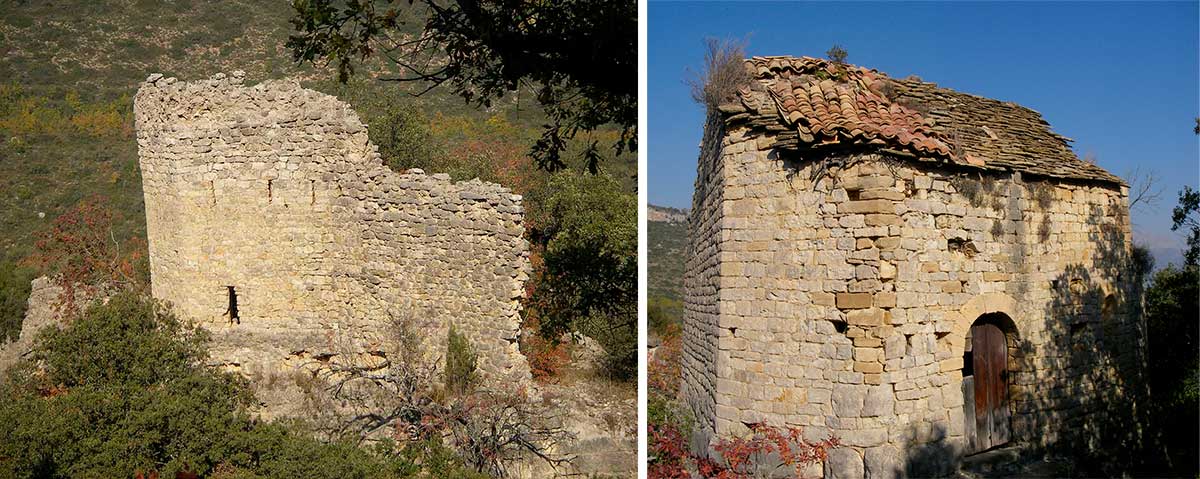
Montclús: the town erased by the earth and preserved by memory
There are places that disappear without a trace, and others that, despite having been reduced to rubble, remain alive within the memory of the landscape and the stories that are made. This is the case of Montclús, an old medieval village located in the region of La Noguera, within the municipality of Les Avellanes i Santa Linya . Today, it is an unpopulated place, but its remains, surrounded by legends and geological memories, tell us about a powerful, tragic and fascinating past.
A village on the margins: the story of a frontier place
Montclús was born in turbulent times, in the middle of the eleventh century, on the border between the Christian world and the Andalusian territory. Its location was strategic: on top of a rocky spur, overlooking the passage of the Noguera Pallaresa river. In this place, a castle and a small hermitage dedicated to Sant Urbà were built, which are already documented in 1060. These constructions served as a nucleus of surveillance and control of passage, especially of an old stone bridge, where the right of pontaje was charged to everyone who passed through – men, animals or goods.
Solivella was part of the Barony of Sant Oïsme, within the Comtat d’Urgell, and was known for its military and administrative function. The town was divided into three different neighborhoods:
- The Sobirà neighbourhood, located at the highest point, with difficult access and natural protection.
- The Jussà neighborhood, the largest, where the hermitage and the castle were.
- The East neighbourhood, on the eastern slope, more exposed and partially protected by walls.
The extreme orography of the place was a defensive resource: the mountain, steep and furrowed with natural cracks, offered protection that was integrated with the dry stone walls. It is believed that at some points, the neighbors used removable wooden bridges to isolate the town in case of attack.

The great earthquake of 1373: an abrupt end
On March 3, 1373, a very strong earthquake, with its epicenter in the Aran Valley, violently shook the entire Pre-Pyrenees. In the Àger valley and in El Montsec, the effects were devastating. Solivella was one of the most affected villages.
Structures gave way, cliffs broke off and large blocks of rock fell on the town, sweetening entire streets and entire neighborhoods. Cracks one meter wide opened up that split the villa in two. The castle was partially demolished and only the hermitage and its sacristy resisted the earthquake. According to legend, only a pious old age who prayed inside the church at the time of the earthquake survived. All the other inhabitants, oral tradition adds, died because of the disaster.
That earthquake was not the first: another of lesser intensity had struck more than a hundred years earlier. The cracks had been filled with stones as if they were band-aids on top of open wounds. But the one in 1373 was definitive: the one in 1373 was wiped off the map.

Legend, geology and memory
The account of the earthquake is intertwined with the legend: it is said that the inhabitants of the city were sinners, violent and hostile, and that God punished them by leaving only the most devout woman as a witness. Beyond religious morality, geology confirms that the government was based on clay strata and fragile limestones, affected by previous landslides more than 20,000 years ago. The passage of the Noguera Pallaresa river had eroded the base of the town, making it especially vulnerable to earthquakes.
The conglomerate needles that today stand like perforated monoliths are remains of that broken orography. The ravine of the river has been transformed by the Camarasa reservoir, which has covered part of the old banks.
Concluded: Conclusion: The place that disappeared without being forgotten
Montclús is a small jewel of Catalonia’s lost heritage, a place that tells us about life on the border, the devastating force of nature and the persistence of oral memory. To visit it is to listen to a murmur of the past: among broken rocks, fallen walls and churches that defy time, you can still feel the baptism of a people who did not want to die completely.


